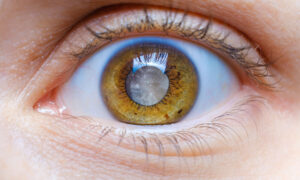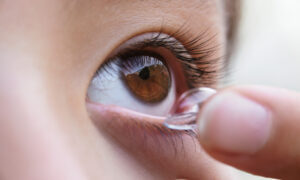May 1, 2024
By Dwight Akerman, OD, MBA, FAAO, FBCLA, FIACLE
The management of juvenile-onset myopia is a critical public health issue, given the significant increase in prevalence over the past few decades. The availability of effective myopia control modalities provides eye care professionals with the opportunity to tailor treatments to individual patients and their unique needs. An invited review paper by Bullimore, Jong, and Brennan highlights the importance of considering factors beyond efficacy when deciding upon the best intervention for a given child.
The authors emphasize that many modalities can achieve clinically meaningful myopia control, including some spectacle lenses, select soft contact lenses, some concentrations of atropine, and overnight orthokeratology. While efficacy is an essential factor to consider, other factors must be carefully considered to ensure that the chosen intervention is effective in the long term. Compliance, quality of vision, quality of life, and safety are four key factors that clinicians should consider when determining the best intervention for a patient.
Compliance is critical and can impact efficacy regardless of the modality chosen. High compliance rates are essential for achieving the desired outcomes of myopia control interventions. Compliance is influenced by the quality of vision and comfort, making daily disposable myopia control contact lenses and overnight orthokeratology the preferred modalities due to their high compliance rates and better vision-related quality of life than spectacles.
Quality of vision is another crucial factor to consider when selecting a myopia control intervention. Spectacles may provide good visual acuity, but they can cause visual distortions and peripheral blur that can affect visual function and performance. Soft contact lenses may provide better visual acuity, but they also carry a risk of corneal abrasions, microbial keratitis, and other ocular complications. Overnight orthokeratology lenses may provide the best visual acuity, but they require careful monitoring to avoid complications such as corneal infection or edema.
Quality of life is also an important consideration. The authors note that children who wear spectacles may experience social stigma or bullying, which can negatively impact their quality of life. Soft contact lenses may be more socially acceptable, but they require special care and maintenance, which can be challenging for children and their parents. Overnight orthokeratology lenses provide excellent vision correction without the need for daytime optical correction, which can improve the quality of life for some children.
Safety is the final factor that clinicians should consider when selecting a myopia control intervention. While all modalities carry some risk, the authors note that daily disposable myopia control contact lenses and overnight orthokeratology lenses carry a very low risk when used appropriately. Atropine drops may be effective at controlling myopia, but they have a higher risk of adverse effects such as allergic reactions, photophobia, and blurred vision. However, these adverse events are concentration dependent.
The availability of a range of effective modalities to treat juvenile-onset myopia enables eye care professionals to exercise judgment when discussing the treatment plan with the patient and their parents. While discussing four key parameters — compliance, quality of vision, quality of life, and safety — the authors suggest that compliance could be the most important, but quality of vision and comfort will clearly influence compliance, which, in turn, drives efficacy.
In conclusion, this review paper highlights the importance of considering multiple factors beyond efficacy when selecting a myopia control intervention. Compliance, quality of vision, quality of life, and safety are all critical factors that clinicians should consider when determining the best intervention for a patient. While many modalities can achieve clinically meaningful myopia control, daily disposable myopia control contact lenses and overnight orthokeratology lenses are often the preferred modalities due to their high compliance rates, better vision-related quality of life, and low risk profile. By carefully considering these factors, clinicians can ensure that their patients receive the most effective and appropriate myopia control intervention for their unique needs.
Abstract
Myopia Control: Seeing Beyond Efficacy
Mark A Bullimore, Monica Jong, Noel A Brennan
The availability of a range of effective myopia control modalities enables the clinician to exercise judgment when discussing the treatment plan with the patient and their parents. This article outlines important considerations beyond efficacy. Clinically meaningful myopia control may be attained with some spectacle lenses, select soft contact lenses, some concentrations of atropine, and overnight orthokeratology. Given that satisfactory efficacy can be achieved with a range of modalities, other factors should be considered when deciding upon the best intervention for a given child. Four key factors — compliance, quality of vision, quality of life, and safety — are discussed in this review. Compliance directly impacts efficacy regardless of the modality and is the most important consideration, as it is influenced by quality of vision and comfort. Daily disposal myopia control contact lenses and overnight orthokeratology are generally associated with high compliance, provide better vision-related quality of life than spectacles, and carry a very low risk when used appropriately. A further benefit of overnight orthokeratology is the elimination of a need for optical correction during the day.
Bullimore, M. A., Jong, M., & Brennan, N. A. (2024). Myopia control: Seeing beyond efficacy. Optometry and Vision Science, 101(3), 134-142.
DOI: https://doi.org/10.1097/opx.0000000000002119














